Cards In This Set
| Front | Back |
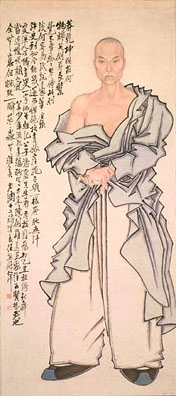 Slide #1 |
Self Portrait by Ren Xiong
undated, hanging scroll, ink and color on paper One of the first self-portraits; relatively naturalistic modeling of the face and upper body contrasts dramatically with the powerful linear rendering of the garments, as though to juxtapose the artist's contemporary reality with the antique traditions to which Chinese painting might pay homage. |
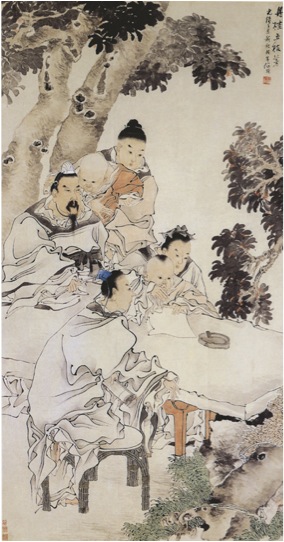 Slide #2 |
Five
Successful Sons by Ren Yi
1877, hanging scroll, ink and color on paper This image depicts a tenth century scholar named Dou Yujun, of the state of Zhou, whose five sons all passed the imperial civil service examinations. |
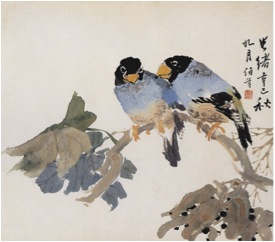 Slide #3 |
Album of Figures, Flowers,
and Birds by Ren Yi
1881-82, Album of 12 leaves, ink and color on paper Album demonstrates several themes for which he is well known, including the story of the loyal Su Wu |
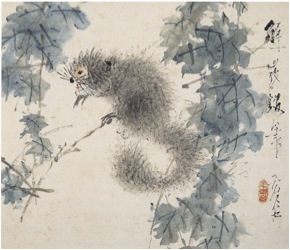 Slide #4 |
Album of Various Subjects by Xugu
12 leaves, ink and color on paper his everyday subject matter and warm colors offer an appeal to the senses. This album combines the auspicious themes for which he is well-known, such as the goldfish as a symbol of high position, with mundane but pleasing objects found in the vegetable or fish market. |
 Slide #5 |
4 Seasons by Wu Changshi
1911, a set of 4 hanging scrolls, ink and color on paper His achievement was to combine a scholarly, epigraphic quality of composition with a more popular appeal. Wu's auspicious floral subjects thus set up powerful contrasts between negative and positive two-dimensional space, while simultaneously creating compelling effects of ink and color. |
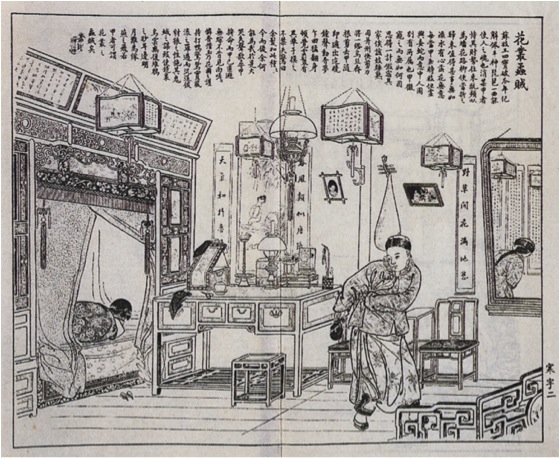 Slide #6 |
Printed Illustrations for Feiyinge Huabao
(Fleeting Shadow Pavilion
Pictorial) by We Jiayou
1891, Features two special features: natural history and famous ladies. Fleeting Shadow Pavilion Pictorial may be viewed as a typical example of Shanghai's hybrid culture, appealing to an urban Chinese audience with its traditional format, but also filled with the most up-to-date of subjects and images. |
 Slide #7 |
Flowers, Melon, Fish, and Insects by Gao Jianfu
1905, Set of four hanging scrolls, ink and color on paper Learned to paint in a subtle and highly naturalistic manner. they retain the boneless techniques of Ju Lian, especially his methods of applying water and powdered pigment directly to the painting surface. |
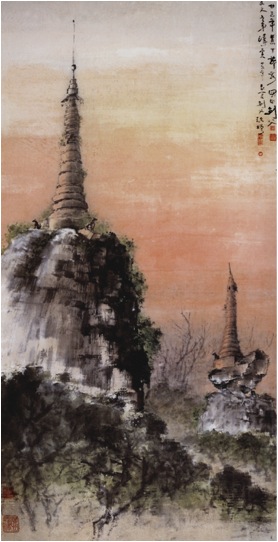 Slide #8 |
Stupa Ruins in Burma by Gao Jianfu
1934, hanging scroll, ink and color on paper This rather romantic image may be related to Gao's growing interest in Asian spirituality, and particularly Buddhist philosophy, following his trip to India. |
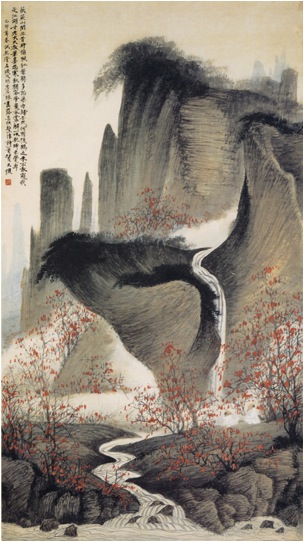 Slide #9 |
Conversation in the Autumn Woods by He Tianjian
1939, Hanging scroll, ink and color on paper He was very influential in the need to have a reform in Chinese painting. He painted bizarre landscapes such as this that have a slightly surreal quality. |
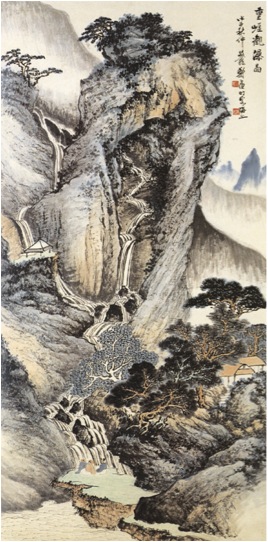 Slide #10 |
Gazing at the Waterfall by Zheng Wuchang
Hanging scroll, ink and color on paper Advocate of traditional painting. He succeeded in his goal of building powerful, monumental, and original compositions by reviving landscape techniques of the Song and Yuan periods. |
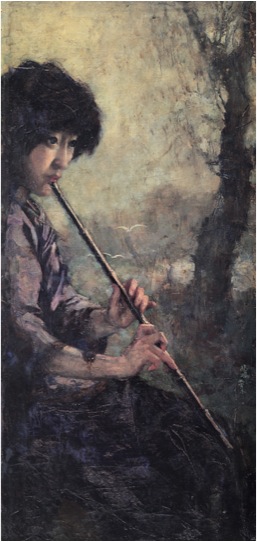 Slide #11 |
Sound of the Flute by Xu Beihong
1926, oil on canvas |
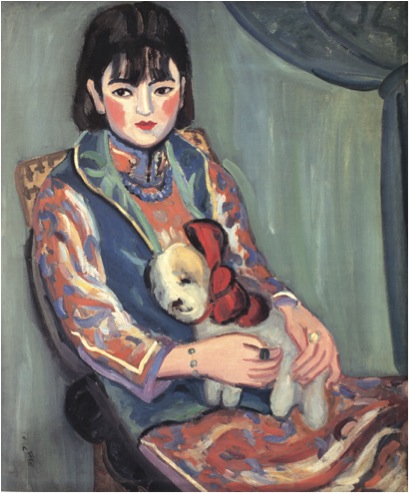 Slide #12 |
Portrait of Miss L by Guan Zilan
1929, oil on canvas, "Storm Society" |
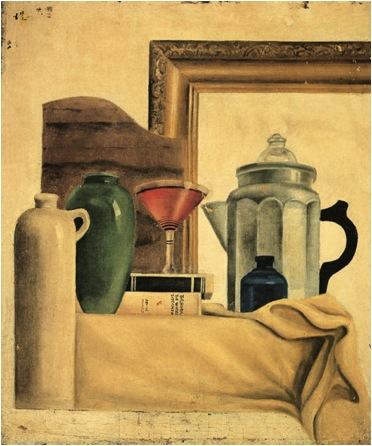 Slide #13 |
Still Life by Qiu Ti
ca. 1931-33, oil on canvas, “Chinese Independent Art Association” |
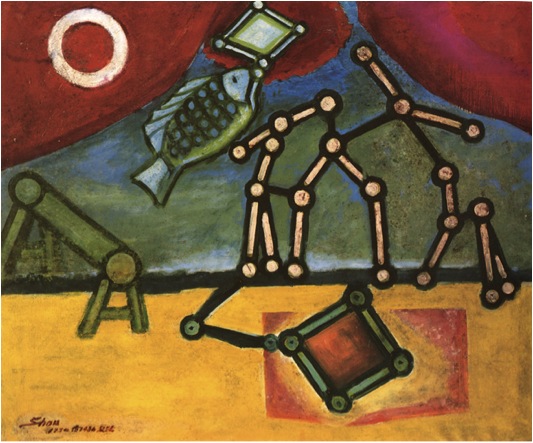 Slide #14 |
Let’s Jump by Zhao Shou
1934, oil on canvas |
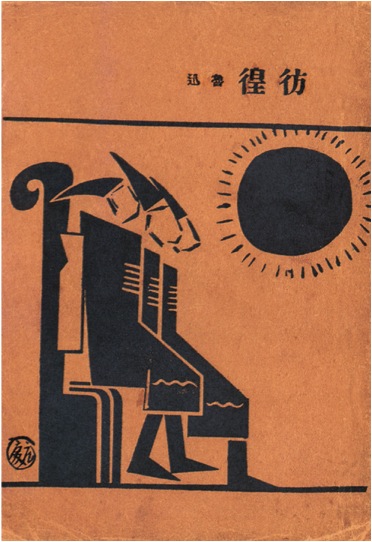 Slide #15 |
Cover
design for Wandering by Tao Yuanqing
1926 |



